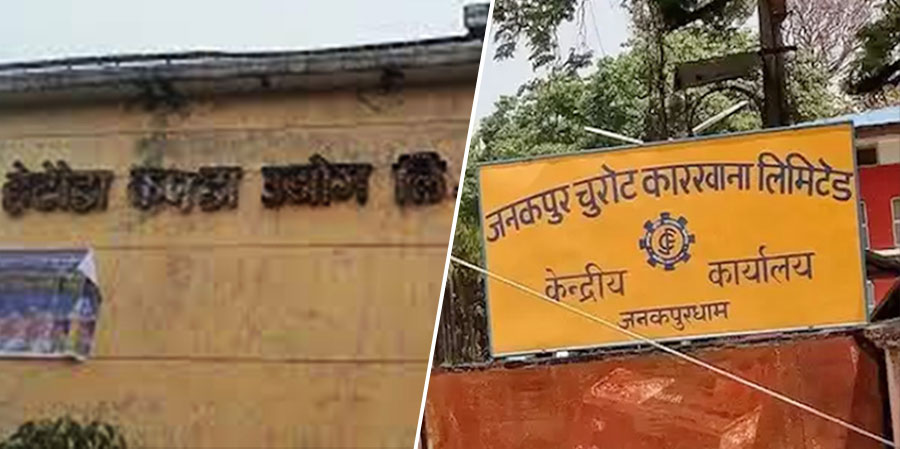
What happens when the country’s revenue generation is dependent on how much the country imports? The answer is simple. The economy takes a major hit. This is what happened in the fiscal year 2022/23, showing symptoms of what economists call the Dutch disease in Nepal.
In the current fiscal year, imports have decreased by about 18 per cent and the trade deficit has decreased by 17 per cent. But its toll has been seen on the government’s revenue as collection has gone down by 12.62 per cent compared to last year.
In terms of government finances, this is the worst situation since the fiscal year 1967/68.
Reduced revenues
Finance and tax experts have been suggesting the government for working on plans to increase internal revenue rather than depending on import-based revenue to rule out the Dutch disease in Nepal. But the government did not listen.
According to Punya Bikram Khadka, the spokesperson of the Department of Customs, revenue based on imports had been down due to the current economic recession taking place in most countries because of the Russia-Ukraine war and the import ban on luxury items that was in place in the country.
The government had set a target of collecting revenue of Rs 1.43 trillion this fiscal year. But in the first 10 months of the fiscal year, it has only been able to collect Rs 756 billion.
Office of the Comptroller General says that the government has only collected 53.9 per cent of its target in the first 10 months of the fiscal year. Last year during the same time period, the government had collected Rs 865 billion.
The government last year announced a budget of Rs 1.79 trillion for the current fiscal year and if it is to be the same, the government will have to collect over Rs 1 trillion in two months, which is impossible. As a result, the government is struggling to manage the expenses of the current fiscal year and prepare the budget for the next year.
The vulnerability to the Dutch disease in Nepal is also increasing because of a two-per cent downfall in internal revenue collection compared to last year. Customs revenue has also gone down by 22 per cent compared to last year.
Khadka, from the Department of Customs, says that the target was to collect Rs 548 billion in revenue by May. But the government has only been able to collect Rs 318 billion so far, which is a deficit of Rs 230 billion.
“This year has shown us how dire the situation can get when you depend on import-based revenue,” says Khadka.
Symptoms of the Dutch disease in Nepal

The government had planned to collect 15.86 per cent more revenue than last year. That would be around Rs 1.43 trillion compared to last year’s Rs 1.18 trillion.
The target was quite ambitious given how world trade had been affected due to the Russia-Ukraine war. But the government did not keep in mind the war during its planning phase.
Remittance also plays a major role in the country’s economy but most of the money that comes through it goes into imports, which is a big risk as government expenses are covered by the revenue raised from imports.
Officials of the Ministry of Finance consider the decrease/increase in revenue at the same rate as the trade deficit as a symptom of Dutch disease.
In the 1960s, the economy of the Netherlands suddenly collapsed due to the depletion of natural resources and its dependence on natural gas exports. The price of the Dutch guilder, the currency of the Netherlands, increased after the excessive extraction of natural gas in the North Sea and excessive export.
Due to this, other products lost their competitiveness, investment decreased and the size of the economy shrank. It resulted in an increase in imports with a rising unemployment rate as the economy went into recession. That is exactly what Nepali economists fear about symptoms of the Dutch disease in Nepal.
“We know over-dependence on one sector has caused issues in Russia, Venezuela and countries in the Gulf. Looking at issues the country is currently facing, it is likely that the country will have a crisis in the future,” says an official working at the Finance Ministry.
According to him, this year’s crisis has given a clear message that the country’s government finances and the country’s economy will go into recession when there are disruptions in imports and remittance flow.
Economist Shiva Raj Adhikari, the head of the economics department of Tribhuvan University, says that the trend of not wanting to invest in industry and only doing business for immediate profit has resulted in a high trade deficit. This has resulted in the risk of Dutch disease in Nepal as the government is highly dependent on imports for revenue.
“For the country’s economic growth to increase by one per cent, the import of the country needs to go up by three per cent,” says Adhikari. “It is impossible to achieve economic growth domestically because the raw materials of most things we produce in the country are brought from abroad.”
“Due to this, the industries have not been able to add even 10 per cent to the price of raw materials brought from abroad,” says Adhikari. Nepal’s policies, laws, and guidelines are leading everyone towards imports.
He argues that the government is not bothering as imports were generating a lot of revenue for the country. “Our only hope is through a major change in policy. If things do not change, our future is bleak,” says Adhikari, hinting at the possibility of the Dutch disease in Nepal.
Internal revenue non-existent

Nepal’s past, however, was not like this. In the fiscal year 1973/74, Nepal’s trade deficit was zero as its export matched its import. In the fiscal year 1976/77, Nepal had a trade surplus, which slowly started to go down in years to come.
Even when the country was going through internal disputes and civil war, trade was going on quite well. But the end of the 90s saw a decline in export after the garment and carpet industries started taking a hit.
After that, Nepal could not tap the international market as it could not produce goods worth exporting. As a result, Nepal’s current trade deficit almost equals the annual budget amount, and hence the Dutch disease in Nepal is close.
Now the government is working to reduce imports. While that is good for long-term growth, it has seriously affected revenue collection in the country. With no production in the country, the internal revenue collection has also taken a major hit as the government has only been able to collect Rs 371 billion in the last 10 months of the current fiscal year. The amount collected in the last year was not as great as the government had only collected Rs 378 million.
Economist Dilliraj Khanal says the situation will not change as long as there is a tendency to import under the guise of remittances and manage government finances by collecting revenue from it.
He argues that the possibility of the Dutch disease in Nepal has also been caused by the government’s style of taxing consumption along with customs, but not paying attention to prevent the leakage of internal revenue.
Khanal adds that if the internal tax system can be strengthened by making it progressive, the dependence on the tax system based on imports can be reduced.
“Internal tax should be increased wherever possible. The government needs to do a lot of work to change the country’s tax system,” says Khanal.
This story was translated from the original Nepali version and edited for clarity and length.


























